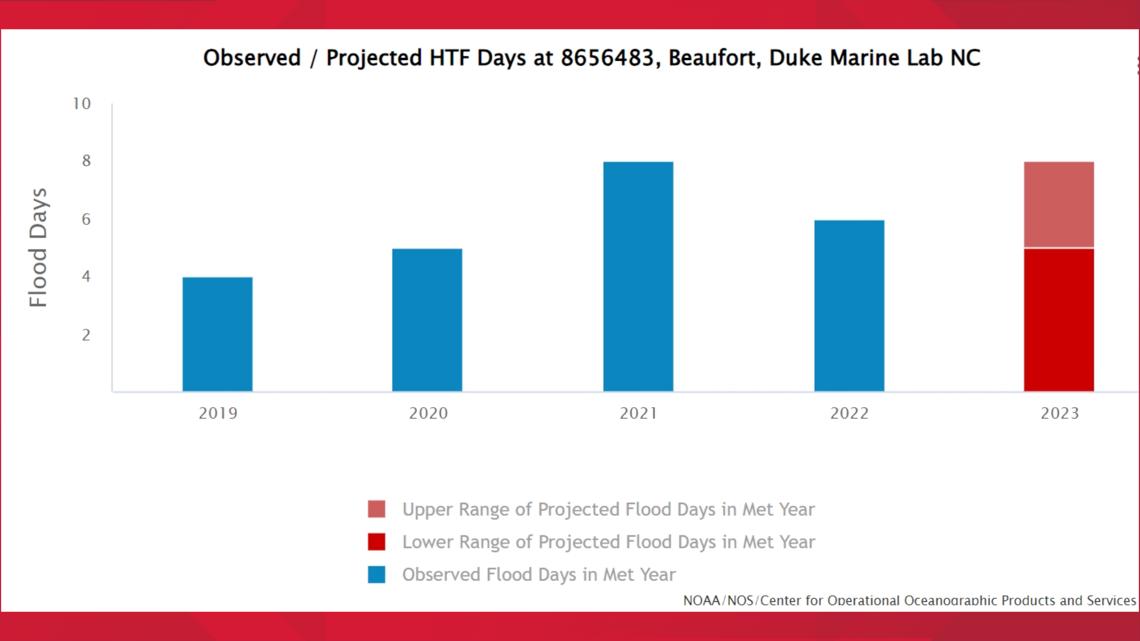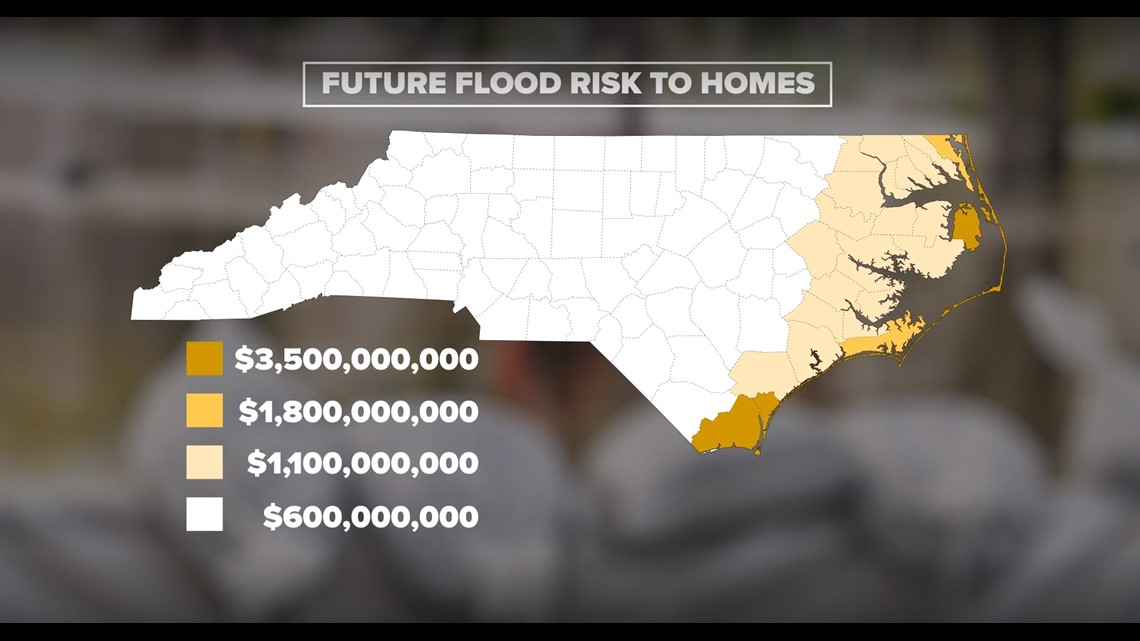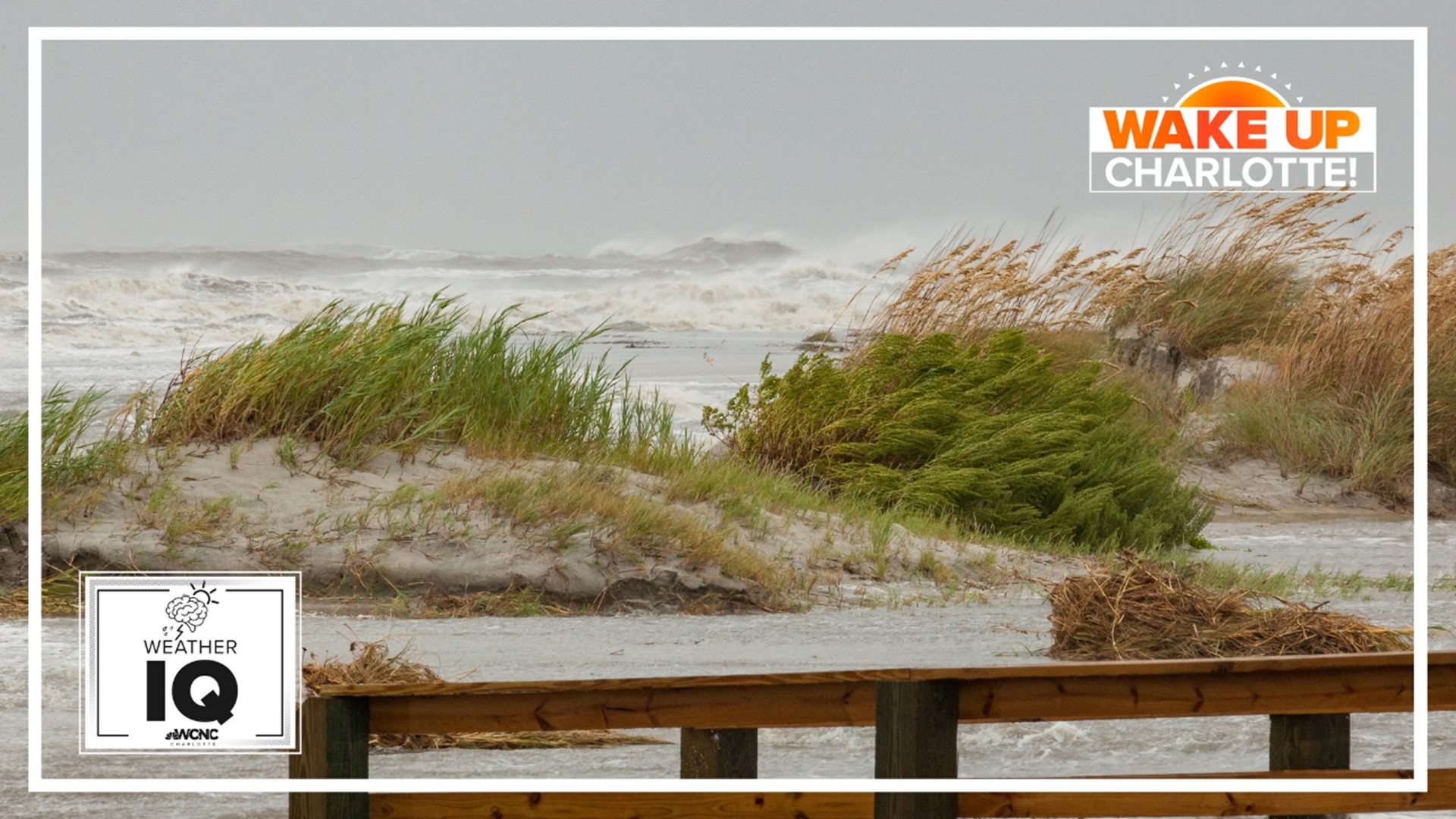CHARLOTTE, N.C. — As the sea level continues to rise, the places we all love on the coast may start to look different. A combination of rising tides and storm flooding could dramatically change the future of coastlines.
Twice per day at the coast, there's a high tide and low tide. High tides are starting to outweigh low tides due to an uptick in coastal flooding.
The weather phenomenon impacting coastal Carolina communities is known as "high tide flooding." This event can occur on sunny days without a storm. The threat is brought on by sea level rise.
William Sweet, an oceanographer with NOAA, says the number of days annually with high tide flooding is increasing.
“High tide flooding ... [was] quite rare just 20 years ago,” Sweet said. "And just last year, six of those days were recorded. Next year, somewhere between five and eight days are expected.”


Sweet says with another foot of sea level rise being driven by climate change, high tide flooding could climb as high as 100 days a year by 2050. That would be the equivalent of 3 and a half months of flooding.
“Emissions really matter, higher emissions equal more heating, more thermal expansion in the ocean, more melting of mountain glaciers in Antarctica and Greenland, higher seas, more flooding," Sweet said explaining what is causing the increase. “The outcome, the amount of sea level rise by the middle and end of the century, really is dependent upon emissions and heating.”
Since our coastline is home to both commerce and tourism, a rising sea environment could change the landscape.
“With that comes a loss of beach," he said. "Typically in a natural environment, the beach would move inland."
Such a change would cause other natural borders, such as sand and dunes, to also move inland.
"We have stuff there, such as cities and houses, that are going to interfere with the inland encroachment of the seas,” he said.


For the latest weather alerts, download the WCNC Charlotte mobile app and enable push notifications.
Sweet said the first step is to plan and prepare by protecting coastal communities that are most vulnerable to high tide floods.
Those preparations could include installing new pump systems to move water or waste in anticipation of higher water tables, he said.
Typically, the Carolina coast sees more flooding in the fall when natural occurrences raise the sea level rise by one foot. While this normally goes back down in winter, Sweet expressed the trend could shift for future seasons.
WCNC Charlotte’s Weather IQ YouTube channel gives detailed explainers from the WCNC Charlotte meteorologists to help you learn and understand weather, climate and science. Watch previous stories where you can raise your Weather IQ in the YouTube playlist below and subscribe to get updated when new videos are uploaded.

